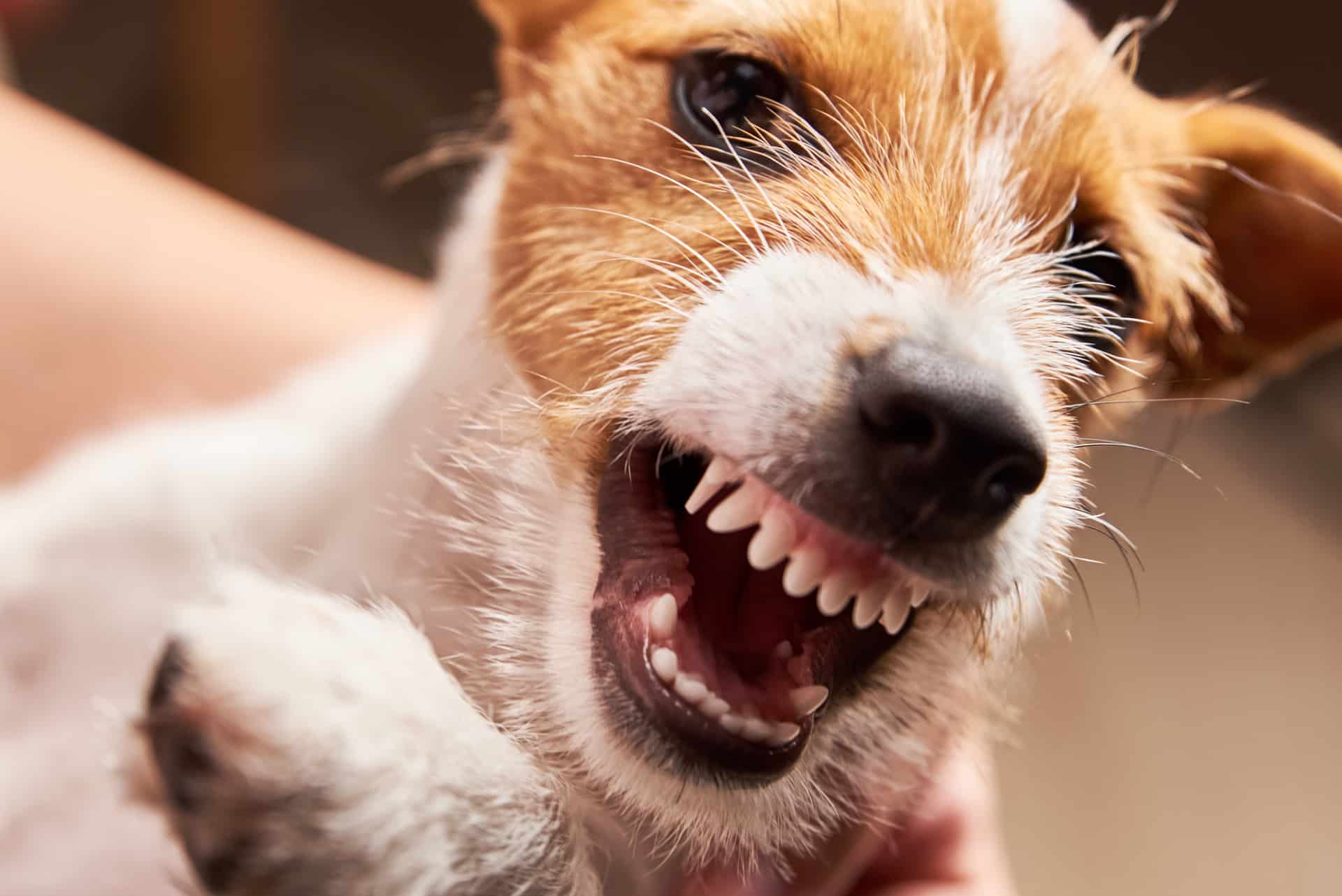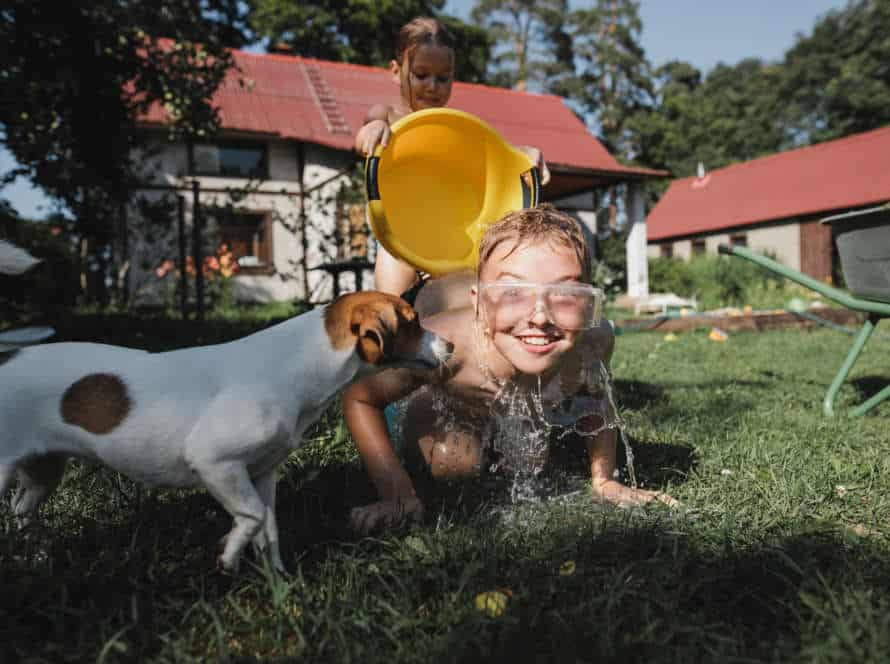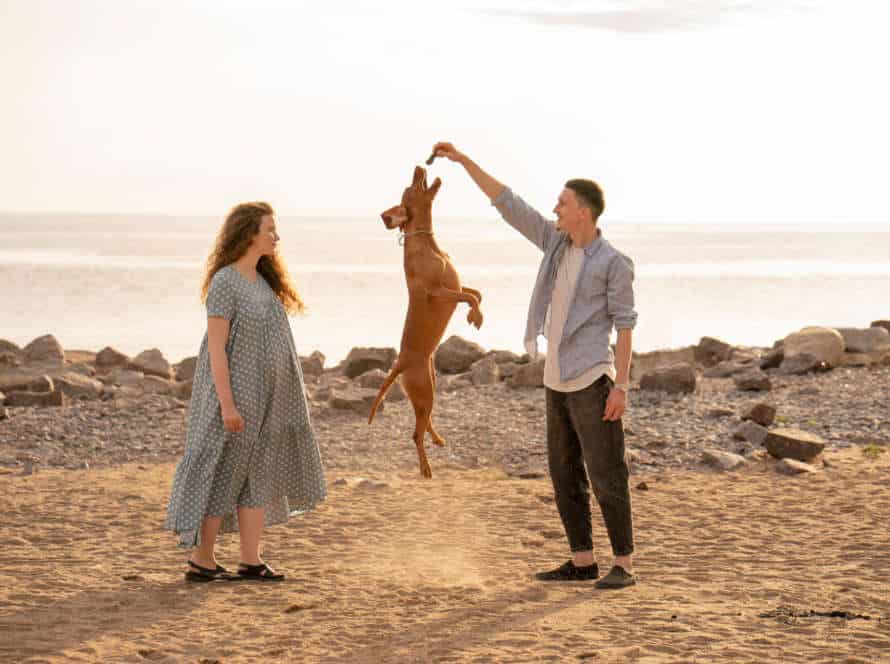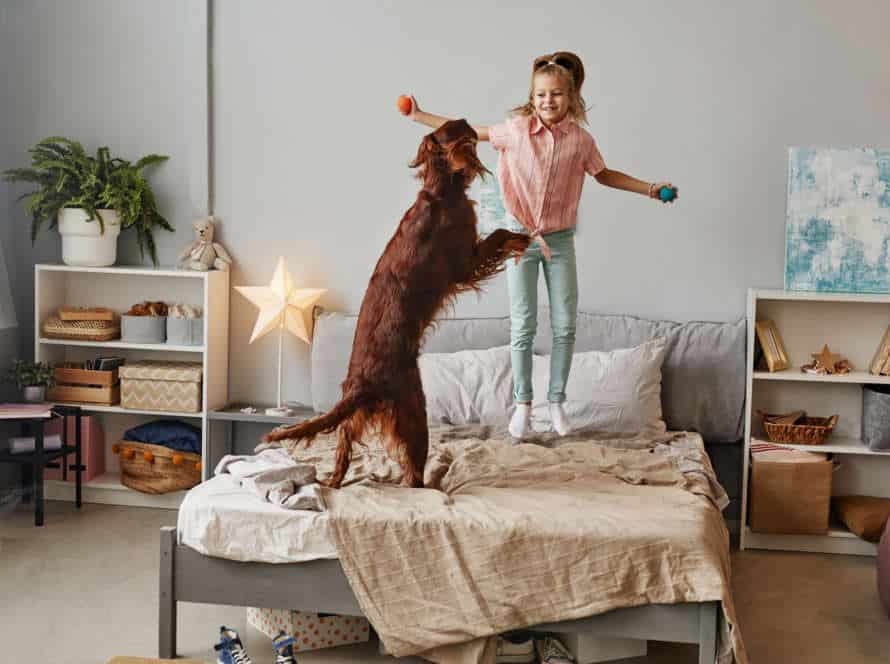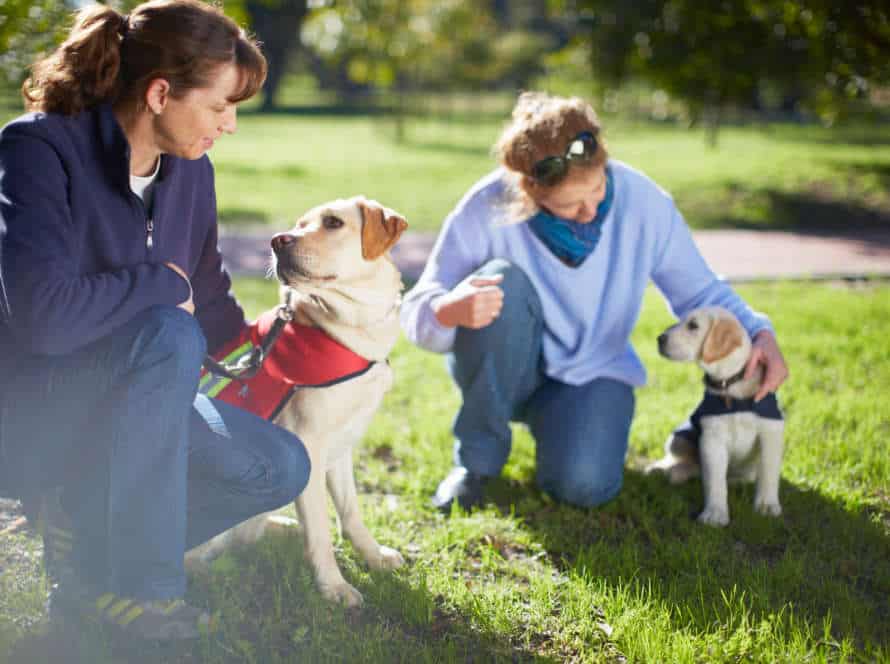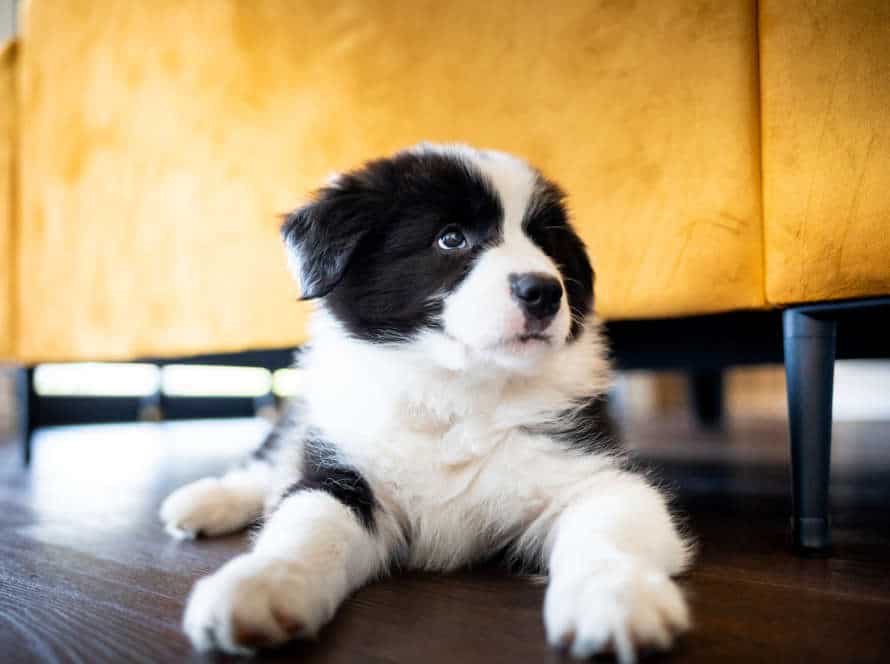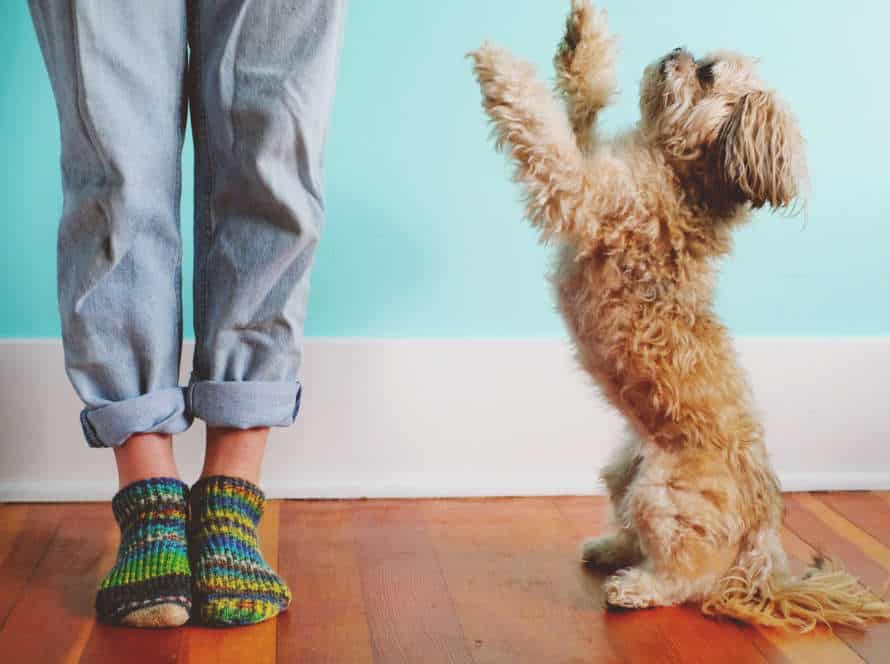Decoding Your Dog’s Aggressive Behavior
It’s important to figure out why your dog is aggressive. Knowing the triggers and signs can stop dangerous situations and safeguard you and your pup.
Watch out for these tell-tale signs:
- Growling
- Snarling
- Showing teeth
- Lunging
- Biting
- Body tense
- Fur standing up
Uncovering what sparks your dog’s aggression is essential to calming them. Fear, ownership instincts, past mistreatment, and pain or sickness can be triggers.
Work with a trained dog expert to make a plan that helps your doggo learn friendly behavior and reduce aggression.
Pro tip: Always look out for yourself first and call a specialist when you’re handling aggressive behavior in dogs.
Understanding Aggressive Behavior in Dogs
Every pup is one-of-a-kind. Some might show more aggressive behavior than others. To learn why your pooch is exhibiting this type of behavior, we must first figure out the cause. Knowing what to search for and why it happens can help you to resolve the issue.
Let’s delve into the particulars of understanding dog aggression.
Types of Aggressive Behavior in Dogs
Aggression in canines can be mild to fierce. It is often caused by certain things. Here are 4 types of aggression seen in dogs:
- Territorial: This kind of aggression is triggered when a pup thinks its space or possessions are threatened.
- Fear: When a canine is faced with a scary experience or thing, it may act aggressively.
- Dominance: If a doggo is trying to be the leader of the pack, it may behave aggressively towards family or other animals.
- Predatory: If a hound’s hunting instincts take over, it may think smaller creatures or kids are prey.
It is important to figure out what triggers your pup’s aggression, so you can stop it and find a solution.
Causes of Aggressive Behavior in Dogs
Aggressive behavior in dogs could have various causes. These include genetics, environmental triggers and more.
Causes of Aggressive Behavior in Dogs
- Fear: Dogs may show aggression if they feel threatened or scared, especially when they sense danger.
- Lack of Socialization: Dogs without exposure to many people, animals and situations during their critical period may become scared and defensive in new situations, resulting in aggressive behavior.
- Medical Conditions: Aggression may be caused by medical issues such as pain or neurological disorders.
- Genetic Predisposition: Some dog breeds are bred for protection, which can cause aggressive behavior if not trained and socialized correctly.
- Environmental Factors: Dogs exposed to bad or neglectful environments may learn aggressive behavior.
Figuring out the cause of your dog’s aggression is essential for treating and managing it. Consult a qualified professional if your dog exhibits aggressive behavior.
Signs of Aggressive Behavior in Dogs
Aggression in canines can be scary and even risky – for both the pup and you. So, it’s key to identify the signs of aggression in your dog and take the proper steps. Here are a few to watch for:
- Baring teeth – this is a warning to others.
- Growling and snarling – signs the dog is uncomfortable.
- Lunging – aggressively trying to attack.
- Stiff body – muscles tense, ears forward = aggression.
- Raised hair – shows the pup is agitated.
Pro Tip: If you see any of these signs, get help from a vet or behaviorist. They’ll work out the cause and help stop dangerous situations from happening again.
How to Deal with Aggressive Behavior in Dogs
Aggression in dogs is a huge issue! It’s essential to figure out why your pup’s being aggressive, to tackle the problem. Dealing with aggressive behavior in dogs may seem hard, but it can be done! Here are some causes and approaches to help modify their behavior.
Prevention Tips for Aggressive Behavior in Dogs
Dealing with aggressive dog behavior can be tough for pet owners. Here are some tips to help avoid it.
- Early Socialization: Get your pup exposed to a range of people, animals, and places early on. This prevents fear-based aggression.
- Positive Reinforcement Training: Use positive reinforcement instead of punishment. This will help your dog understand expectations and build trust.
- Establish Dominance: Show your dog that you are the leader. Do this by setting boundaries, enforcing rules, and using positive reinforcement.
- Regular Exercise & Playtime: Give your dog regular exercise and interactive playtime. This stops pent-up energy and frustration, which can lead to aggression.
- Keep Your Dog Calm & Safe: Provide your dog with a calm environment and keep them on a leash in public. Steer clear of confrontational situations. Give your dog a safe space to retreat to in stressful times.
Training Techniques to Deal with Aggressive Behavior in Dogs
Aggressive behavior in dogs is a serious issue. It can be harmful to the dog and others. To deal with it, here are some techniques:
- Positive reinforcement: Reward good behavior, like no growling or biting in stressful situations. Give treats and praise.
- Counter-conditioning: Teach your dog to link the things that cause aggressive behaviour with positive things, like treats and toys.
- Desensitization: Expose your dog to the things that trigger aggression in a controlled and safe way. This reduces fear and anxiety.
- Consistency: Ensure everyone who interacts with your dog follows the same training techniques. This avoids confusing them and making the problem worse.
- Professional help: If the aggression persists or gets worse, seek help from a professional.
Remember: Aggressive behaviour can’t be corrected overnight. Patience, time and effort from the trainer will help the dog. Pro Tip: Practicing patience and consistency with these techniques can help your dog overcome aggressive behaviour.
Safety Measures to Take when Dealing with Aggressive Dogs
Dealing with aggressive dogs can be tough. To protect yourself and those around you, take these steps:
- Keep calm and don’t make any sudden gestures.
- Try to distract the dog with a toy or treat.
- Speak firmly and give commands like “sit” or “stay“.
- If the dog looks like it might attack, use a stick or umbrella to keep it away.
- If you and your dog spot an aggressive dog, move yours behind you and step away slowly.
- Stay well away from aggressive dogs. Don’t make eye contact.
- If you get bitten, seek medical help quickly and tell animal control.
It’s key to understand your own dog’s behavior and training needs so it won’t become aggressive towards other dogs or people.
Seeking Professional Help for Aggressive Behavior in Dogs
If your pup’s aggression is causing trouble in your home, you must get help. Look for a qualified specialist to figure out why it’s happening and make a plan. Here, we will explain how to get professional help for aggressive doggy behavior.
When to Seek Help from a Professional
Aggressive behaviors in dogs can vary from a mild growling to a dangerous bite. It’s essential to recognize the signs and symptoms so you can know when to get professional help.
Look for these behaviors to determine if professional help is needed:
- Growling, snapping, or biting with no warning or reason. This could mean your pup has an underlying medical or behavioral issue.
- Fear aggression, which involves cowering, running away, or growling when in a certain setting such as with other dogs or strangers.
- Possessive aggression, which is protecting food, toys, or territories and can worsen to biting.
- Territorial aggression, which is when your dog growls, barks, or bites when someone enters your house or yard.
- Aggression towards children or other vulnerable persons. This is a major concern and requires quick professional help.
When your pup’s aggressive behavior puts people or other animals in danger, it’s time to get professional assistance. A professional can diagnose and treat the root of the problem and teach you techniques to modify the behavior.
Types of Professionals to Consider for Aggressive Behavior in Dogs
Aggressive behavior in dogs is a major concern. Professional help is needed to manage it. Consider these types of professionals:
- Veterinarians: They can check for medical issues which could cause aggressive behavior.
- Trainers: They can help teach dogs new behaviors and socialization skills, instead of aggression.
- Behaviorists: They understand canine psychology, and can make a plan to change the dog’s behavior.
- Board-certified veterinary behaviorists: Trained to treat difficult behavior issues, they can also prescribe medications for severe aggression.
- Animal control officers: Trained to assess and handle cases where dogs may be a danger to others.
Seek professional help. It will help both you and your dog manage aggression, and create a safe home environment.
What to Expect from a Professional Evaluation and Treatment Plan
A pro evaluation and treatment for aggressive doggy behavior needs a systematic approach. It includes:
- Evaluation: Watching their behavior for signs like fear, anxiety, and aggression. Also, taking a history of the doggo’s environment and behavior.
- Diagnosis: Working out the cause of the doggo’s behavior, e.g. fear, territory, or socialization.
- Treatment Plan: A personalized plan based on the pup’s specific needs. It might include desensitization, counter-conditioning, teaching new skills, and modifications to environment or routine.
Pro Tip: Choose a pro who uses positive reinforcement and avoids punishment. Punishment can make aggression worse.
Frequently Asked Questions
Q: Why is my dog displaying aggressive behavior?
A: Dogs may display aggressive behavior due to fear, territorial instincts, protectiveness, or lack of socialization. It is important to identify the trigger for such behavior and train your dog accordingly.
Q: Can aggressive behavior in dogs be cured?
A: Yes, aggressive behavior in dogs can be corrected through proper training, socialization, and positive reinforcement. It is important to address such behavior early on before it becomes a habit.
Q: Should I punish my dog for displaying aggressive behavior?
A: No, punishment can make the situation worse and lead to more aggressive behavior. Instead, try to identify the cause of the behavior and address it through positive reinforcement and training.
Q: Can neutering or spaying my dog help with their aggressive behavior?
A: It may help in some cases, but it is not a guaranteed solution. It is best to consult with a veterinarian or animal behaviorist to determine the best course of action for your dog.
Q: Is it safe to approach an aggressive dog?
A: No, it is not safe to approach an aggressive dog, especially if you are unfamiliar with the dog. It is best to seek the help of a professional to handle such situations.
Q: Can I still socialize my dog if they display aggressive behavior?
A: Yes, it is still possible to socialize your dog with the appropriate training and guidance from a professional. It is important to address the aggressive behavior before introducing your dog to other dogs or people.

